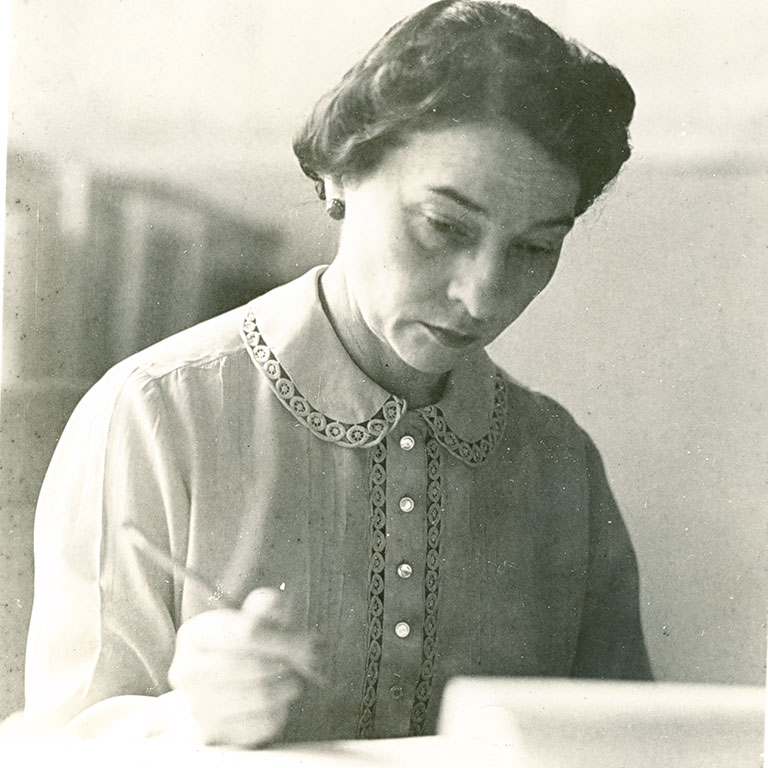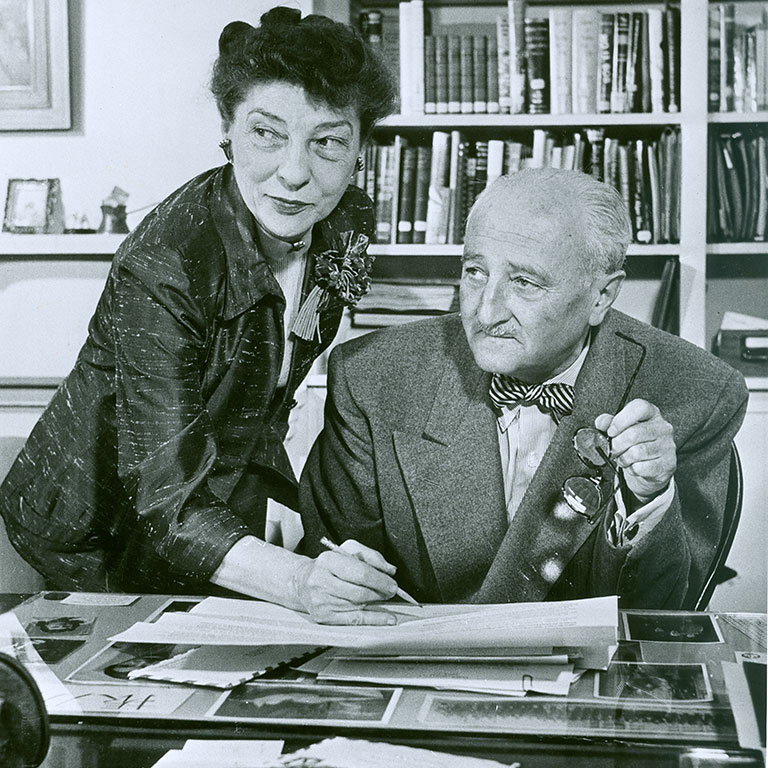Honoring America's first female cryptanalyst
Huntington, Ind. -- Throughout the years, women have played a significant role in the fields of science and technology, though their accomplishments have often been overlooked.
With more women entering science-based fields, the remarkable women who came before them are finally being recognized for the lasting impacts they made. One of those women is Indiana native Elizebeth Smith Friedman, one of the most prolific cryptanalysts in history.
"Elizebeth broke glass ceilings before we even knew what glass ceilings were," said Melissa Davis, director of library and archives at the George C. Marshall Foundation, which houses Friedman's archives. "Her ability to recognize patterns in coded messages enabled her to raise code-breaking to a science, which helped win World Wars and capture criminals and spies. Her efforts laid the groundwork for the encryption we see today in email and cell phones."
Friedman's legacy will be acknowledged on Aug. 26 during a celebration in her hometown of Huntington, Ind. The event, sponsored by Indiana University, the City of Huntington and the Indiana Historical Bureau, a division of the Indiana State Library, will occur at 4 p.m. at Memorial Park and will include the unveiling of a state historical marker in her name. It is free and open to the public.
"The importance of pioneers like Elizebeth Smith Friedman cannot be understated, especially when it comes to their influence on young women interested in STEM and especially cybersecurity," said Laurie Burns McRobbie, adjunct faculty in the IU Luddy School of Informatics, Computing, and Engineering and founder of the Laurie Burns McRobbie ServeIT Clinic. "Elizebeth is one of the most innovative and accomplished cryptanalysts in history, both male and female. I am thankful to have the opportunity to honor her legacy and to continue to share her story."
"America's first female cryptanalyst"
Born in 1892, Friedman was a linguist from an early age and eventually earned a degree in English literature from Hillsdale College in Michigan. She became involved in codebreaking when she met millionaire businessman George Fabyan, owner of Riverbank Laboratories, one of the first facilities in the U.S. founded for the study of cryptography. There, Friedman honed her skills and met William Friedman, the man she would eventually marry.
When the U.S. entered World War I, Friedman and her husband led the first code-breaking unit in America, writing the book on code breaking for the U.S. Army and teaching the first cryptography classes to soldiers in WWI. Following the war, she began working for the government, and in the 1920s,
Friedman ran a cryptanalytic unit under the U.S. Coast Guard to monitor illicit smuggling rings, where she intercepted and solved the coded messages of mobsters and criminal gangs, delivering them to the Coast Guard. She was the first woman to ever lead such an initiative.
During World War II, Friedman decrypted messages that had been sent using the infamous German Enigma machines, destroying an entire spy network across South America. However, J. Edgar Hoover took credit for the discovery, and with much of her work classified, Friedman took the real story to her grave.
Her accomplishments and involvement in World War II were finally acknowledged when documents were declassified in 2008, 20 years after her passing.
"Elizebeth was not just a cryptologist – she was a loving wife, mother and sister, and when she was made redundant after World War II, she still had a life to focus on," Davis said. "I think this made the transition easier for her, but also made it more difficult for future generations to understand the importance of what she accomplished. She simply did not talk about her years as a code and cipher breaker. Time, and the efforts of some who didn’t want it known that a woman was breaking codes for the FBI, among other government agencies, erased her from history. Finally, that history is coming to light."
The upcoming unveiling of the state historical marker joins other recent efforts to acknowledge Friedman’s work including a documentary, books, podcast and the christening of the U.S. Coast Guard cutter "Friedman." The state historical marker will be placed in Memorial Park at 1200 W. Park Drive in Huntington.
The upcoming unveiling will feature remarks from Laurie Burns McRobbie, IU Vice President for Research Fred H. Cate and Mayor of Huntington Richard Strick.
"Friedman's work in codebreaking and her significant accomplishments throughout her career cannot be overstated," said Strick. "Her achievements, particularly toward the outcome of the second World War, give all of us an example of how our personal passions can be translated into public good."




